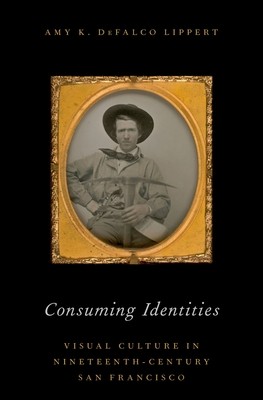
- We will send in 10–14 business days.
- Author: Amy Defalco Lippert
- Publisher: Oxford University Press, USA
- ISBN-10: 0190268972
- ISBN-13: 9780190268978
- Format: 15.8 x 23.6 x 3.6 cm, hardcover
- Language: English
- SAVE -10% with code: EXTRA
Reviews
Description
Along with the rapid expansion of the market economy and industrial production methods, such innovations as photography, lithography, and steam printing created a pictorial revolution in nineteenth-century society. The proliferation of visual prints, ephemera, spectacles, and technologies transformed public values and perceptions, and its legacy was as significant as the print revolution that preceded it. Consuming Identities explores the significance of the pictorial revolution in one of its vanguard cities: San Francisco, the revolving door of the gold rush. In their correspondence, diaries, portraits, and reminiscences, thousands of migrants to the city by the Bay demonstrated that visual media constituted a central means by which people navigated the bewildering host of changes taking hold around them in the second half of the nineteenth century, from the spread of capitalism and class formation to immigration and urbanization. Images themselves were inextricably associated
with these world-changing forces; they were commodities, but as representations of people, they also possessed special cultural qualities that gave them new meaning and significance.
EXTRA 10 % discount with code: EXTRA
The promotion ends in 18d.02:10:57
The discount code is valid when purchasing from 10 €. Discounts do not stack.
- Author: Amy Defalco Lippert
- Publisher: Oxford University Press, USA
- ISBN-10: 0190268972
- ISBN-13: 9780190268978
- Format: 15.8 x 23.6 x 3.6 cm, hardcover
- Language: English English
Along with the rapid expansion of the market economy and industrial production methods, such innovations as photography, lithography, and steam printing created a pictorial revolution in nineteenth-century society. The proliferation of visual prints, ephemera, spectacles, and technologies transformed public values and perceptions, and its legacy was as significant as the print revolution that preceded it. Consuming Identities explores the significance of the pictorial revolution in one of its vanguard cities: San Francisco, the revolving door of the gold rush. In their correspondence, diaries, portraits, and reminiscences, thousands of migrants to the city by the Bay demonstrated that visual media constituted a central means by which people navigated the bewildering host of changes taking hold around them in the second half of the nineteenth century, from the spread of capitalism and class formation to immigration and urbanization. Images themselves were inextricably associated
with these world-changing forces; they were commodities, but as representations of people, they also possessed special cultural qualities that gave them new meaning and significance.


Reviews